What's New
Displaying results 3511 - 3520 of 4052
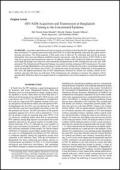
Resource | Publications,
A seventh round behavioral and serological surveillance found that the HIV epidemic had remarkably increased to 7% among intravenous drug users (IDU) in Central Bangladesh, indicating the urgent need to increase prevention.
The main purposed of this study were to find out, by collecting data and the necessary information from sero-surveillances, published reports, and articles, what the prevalence of HIV/AIDS is, and what the acquisition and transmission routes are. In addition, trends in HIV-related risk behaviors among recognized high risk groups were observed, and estimations and projections of HIV transmissions up to the year 2020 results reveal that Bangladesh is a low prevalence country which is turning into one with a concentrated epidemic due to the high HIV prevalance rate of HIV transmission, followed by female sex workers, clients of sex workers, and men who have sex with men. If the transmission rate continues to increase, the situation will be uncontrolled. Therefore, there is an urgent need for a comprehensive prevention program to control the spread of HIV.
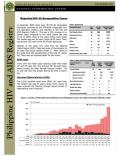
Resource | Fact Sheets,
In December 2008, there were 38 HIV Ab seropositive individuals confirmed by the STD/AIDS Cooperative Central Laboratory (SACCL) and reported to the HIV and AIDS Registry (Table 1). This was a 52% increase in reported cases compared to the same period last year (n=25 in 2007). Most of the cases (92%) were males. The median age was 26 years (range 18-55 years). Sixty-one percent (23) were in the 20-29 year age-group.
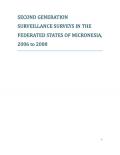
Resource | Publications,
The Federated States of Micronesia (FSM) consists of four major island groups forming the states of Kosrae, Pohnpei, Chuuk, and Yap. A total of 35 positive HIV cases were confirmed in FSM as of December 2007 (UNAIDS 2008), and limited data exist on the behavioral dimensions of HIV and STI transmission in FSM. Between 2006 and 2008, six SGS surveys were conducted in FSM across three of the four states (Yap, Pohnpei, Chuuk) in four different population groups (PNC Women, Police, Youth, and Outer Island Communities).
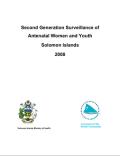
Resource | Publications,
This report presents the findings of the second round of second generation surveillance (SGS) surveys conducted in the Solomon Islands in 2008. As in 2004-05, two population groups were surveyed: antenatal women and youth.
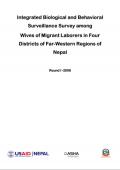
Resource | Publications,
This report presents the findings of the first round of the Integrated Biological and Behavioral Surveillance Survey (IBBS) of wives of migrant laborers in West to Far-Western Nepal. This study is based on surveys of 400 spouses of those migrant laborers in the four districts of Achham, Doti, Kanchanpur, and Kailali who temporarily migrate or had migrated to India to work as laborers. The survey was conducted among the wives or widows of current or ex- labor migrants to India aged 16 years or over, whose spouse had spent at least three months in India and who had returned to Nepal at least once in the last three years. The survey measured the prevalence of HIV among the study population.
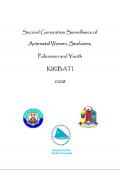
Resource | Publications,
This report presents the findings of the second round of Second Generation Surveillance (SGS) surveys conducted in Kiribati in 2008. The first round of SGS was conducted 2004-05 and included two population groups, Antenatal women and Seafarers. In 2008, surveillance included a sexually transmitted infection (STI) prevalence survey (SPS) survey of Antenatal women, Human Immunodeficiency Virus (HIV) surveillance surveys (HSS ) of Seafarers and Policemen and a behavioural surveillance survey (BSS) for youth.
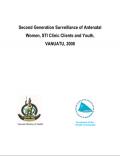
Resource | Publications,
This report includes the findings from the three Second Generation Surveillance (SGS) surveys of sexually transmitted infections (STIs) and Human Immunodeficiency Virus (HIV) prevalence and risk behaviour, which were conducted in 2008 in Vanuatu:
- STI Prevalence Survey (SPS) among pregnant women,
- Behavioural Surveillance Survey (BSS) among youth, and
- HIV Surveillance Survey (HSS) in clients attending an STI clinic.
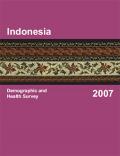
Resource | Publications,
The 2007 Indonesia Demographic and Health Survey (IDHS) is the sixth in a series of surveys undertaken as part of the international Demographic and Health Surveys project.
The main objective of 2007 IDHS was to provide detailed information on population, family planning, and health for policymakers and program managers. The 2007 IDHS was conducted in all 33 provinces in Indonesia. The survey collected information on respondents’ socioeconomic background, fertility levels, marriage and sexual activity, fertility preferences, knowledge and use of family planning methods, breastfeeding practices, childhood and adult mortality including maternal mortality, maternal and child health, and awareness and behavior regarding HIV/AIDS and other sexually-transmitted infections.
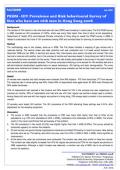
Resource | Fact Sheets,
The number of HIV reports in men who have sex with men (MSM) was increasing in recent years. The first PRiSM survey in 2006 revealed an HIV prevalence of 4.05%, which was many folds higher than that of other at-risk populations. Department of Health (DH) commissioned the Chinese University of Hong Kong to repeat the PRiSM survey in 2008. It helped to understand the trend of HIV prevalence among MSM and provided data for the planning of prevention activities.






